How to lose weight while feeding baby
How to Lose Weight While Breastfeeding: Tips and More
Breastfeeding may help you lose weight post-pregnancy, but the amount of weight you’ll lose varies for everyone.
Breastfeeding typically burns 500 to 700 calories per day. To lose weight safely while breastfeeding, it’s important to follow your doctor’s recommendations for how many calories you need to consume daily. You also will need to get clearance from your doctor before resuming exercise after childbirth.
Read on to learn more about postpartum weight loss while breastfeeding.
A number of factors will affect how quickly you lose the weight you gained during pregnancy, including:
- your metabolism
- your diet
- how often you exercise
- how much weight you gained during pregnancy
Depending on how much weight you gained during pregnancy, it may take six to nine months, or up to a year or longer to lose the weight you gained. Some women never lose all of it.
It’s common to lose around 13 pounds shortly following delivery. This quick weight loss is from the baby, placenta, and amniotic fluid. This amount could vary depending on the size of your baby or whether you retained a lot of fluid during pregnancy.
Following this initial weight loss, you’ll need to take in fewer calories than you burn off to lose more weight. But for health and safety reasons, you’ll want to lose weight gradually and consume at least 1,800 calories each day while breastfeeding. This will keep your milk supply high and give you enough energy.
You can safely aim to lose around one to two pounds per week. You may find you’re back at your prepregnancy weight after breastfeeding for six months. For some women, it may take a year or two.
It may take longer to lose weight if you’ve been pregnant before or if you gained more than the 30 to 35 pounds during pregnancy.
Based on daily calorie intake recommendations for women aged 19 to 50, based on your lifestyle, you may need to consume the following number of calories per day while breastfeeding:
To maintain your current weight while breastfeeding, and keep up your milk production and energy levels, you’ll need to consume an additional 450 to 500 calories per day.
- sedentary lifestyle: 2,250 to 2,500 calories per day
- moderately active lifestyle: 2,450 to 2,700 calories per day
- active lifestyle: 2,650 to 2,900 calories per day
Once you’ve identified the total amount of calories you should be eating daily, try to make sure the majority of your calories are coming from nutrient-rich foods. These include:
- whole grains
- fruits
- vegetables
- lean protein
If you’re trying to lose weight, avoid empty-calorie foods like:
- white bread
- pasta
- cookies
- baked goods
- other junk or fast food
You may also need to take a multivitamin or you may continue taking your prenatal vitamin while breastfeeding. Ask your doctor which supplements they recommend.
Is it safe to restrict calories while breastfeeding?
Even if you’re trying to lose weight, make sure you’re consuming at least 1,800 calories per day while breastfeeding. You can supplement your diet with exercise once you’re cleared by your doctor. For most women, this is usually around six weeks after delivery, though it may be longer if you had a cesarean delivery, or complications during or after delivery.
You can supplement your diet with exercise once you’re cleared by your doctor. For most women, this is usually around six weeks after delivery, though it may be longer if you had a cesarean delivery, or complications during or after delivery.
It’s important to maintain a healthy diet while breastfeeding so that you can produce nutritious milk for your baby. That means cutting calories may not always be a safe option.
However, there are several things you can do to safely support weight loss while breastfeeding.
1. Go lower-carb
Limiting the amount of carbohydrates you consume may help you lose pregnancy weight faster. But be sure you’re supplementing with plenty of protein, fruits, and vegetables. Aim to still eat a minimum of 1,800 calories per day, and always talk to your doctor before starting any new diet postpartum.
2. Exercise safely
Once your doctor has cleared you to exercise, gradually ease back into working out. Focus on postpartum-safe workouts like yoga and going on walks with your baby.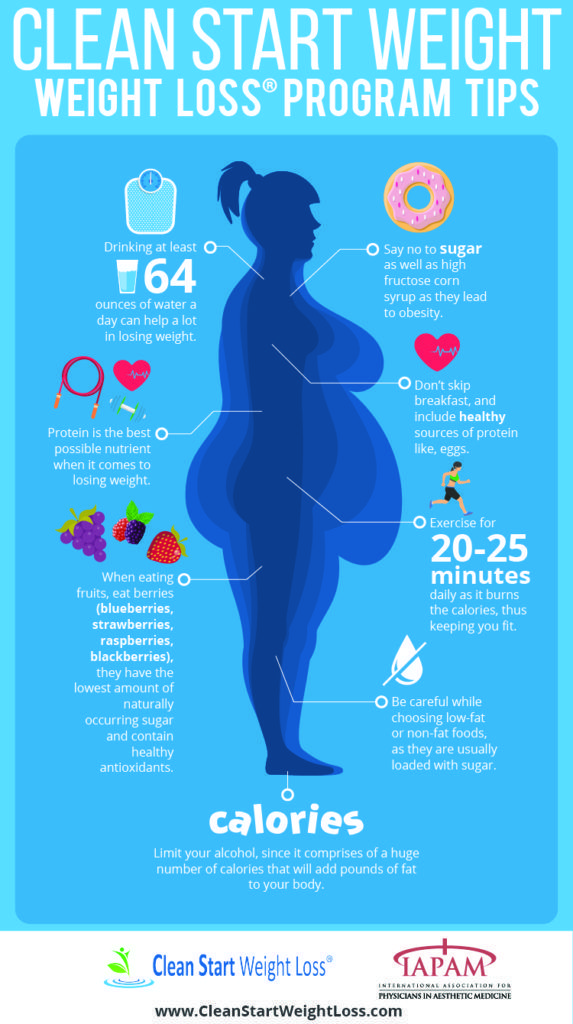
You can start by working out 20 to 30 minutes per day. Work up to 150 minutes of moderate exercise per week.
Try to breastfeed your baby before working out to avoid engorgement.
3. Stay hydrated
When you’re breastfeeding, it’s important to stay hydrated. Try to drink 12 cups (96 fluid ounces) of water each day.
Drinking water and clear fluids will help your body flush out any water weight, too. And avoid sugary beverages if you’re trying to lose weight, as these are loaded with empty calories.
4. Don’t skip meals
Don’t skip meals while breastfeeding, even if you’re trying to lose weight. Skipping meals can slow down your metabolism and cause your energy to drop, which can make it more difficult to be active and care for your baby.
Plus, eating too few calories per day may cause your weight loss to plateau or stop.
If you don’t have a lot of time to eat, try to eat smaller snacks throughout the day. A good goal is to have a healthy snack, such as a piece of fruit, after feeding your baby to replenish calories lost.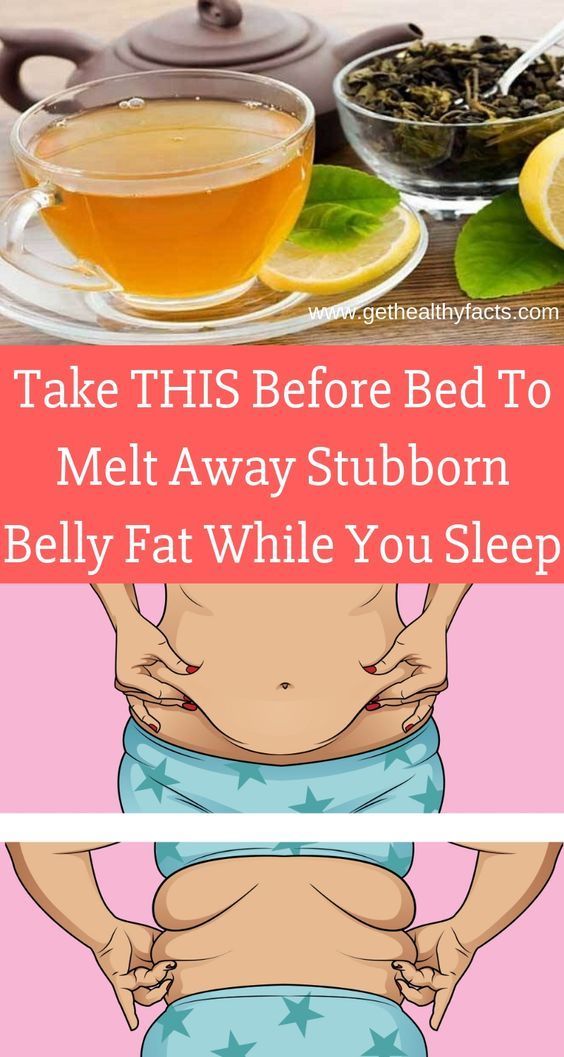
5. Eat more frequently
In addition to not skipping meals, eating frequently can also help support your weight loss goals. More frequent meals can help you have more energy throughout the day.
Aim for three meals and two snacks per day. Though if you’re constantly hungry while breastfeeding, you may need to add more small, healthy snacks throughout the day.
6. Rest when you can
It can be difficult to find time to rest when you have a new baby. But try to get as much sleep as you can. It can help your body recover faster and you may lose weight faster.
Sleep is also important once you return to exercising. That’s because your muscles need to rest and recover after your workouts.
If your baby is feeding throughout the night, try to take short naps during the day when your baby sleeps.
See your doctor if you’re concerned about losing weight postpartum. They can assess your diet and lifestyle, and offer healthy suggestions for losing weight.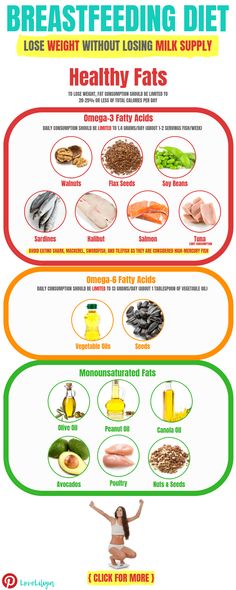
For example, if you’re having trouble losing weight, it may be safe to cut back on the number of calories you’re eating six months postpartum when your baby starts solids.
If you’re unhappy with your body image, your doctor may be able to recommend a counselor, therapist, or weight loss specialist who works with postpartum moms.
Let your doctor know if you’re concerned that you’re losing weight too quickly while breastfeeding (more than one to two pounds per week.) You may need to supplement your diet with additional meals or snacks throughout the day. This may also help keep up your milk supply.
Remember that it took nine months to gain the weight during pregnancy, so be kind to your body as you start your weight loss journey. Some women find it takes six to nine months to get back to their prepregnancy weight. For others, it can take one to two years.
Try not to compare yourself to others. Ease back into exercising gradually and focus on eating a healthy diet without restricting too many calories while breastfeeding.
How to Lose Weight While Breastfeeding
For most of us moms, there was at least one moment after giving birth when we caught a glimpse in the mirror of our postpartum body in all its stretched-out, bulbous glory and felt a wave of shock. Most of us want our pre-pregnancy body back as quickly as possible, but dropping those pounds postpartum—especially losing weight while breastfeeding, when you’re hungry all the time—isn’t always an easy feat, nor should it be rushed.
“In order to deliver a baby, everything in the body expands,” says Jennifer Ritchie, IBCLC, a lactation consultant in Newport Beach, California and author of I Make Milk, What’s Your Superpower? “Your hips expand, your ribcage expands. It took a good nine months to put that weight on, so give yourself at least nine months to get it off and get your body back.”
Once you’re past the first few weeks after giving birth (your body needs time to heal, after all), getting back to a shape you’re happier with is possible.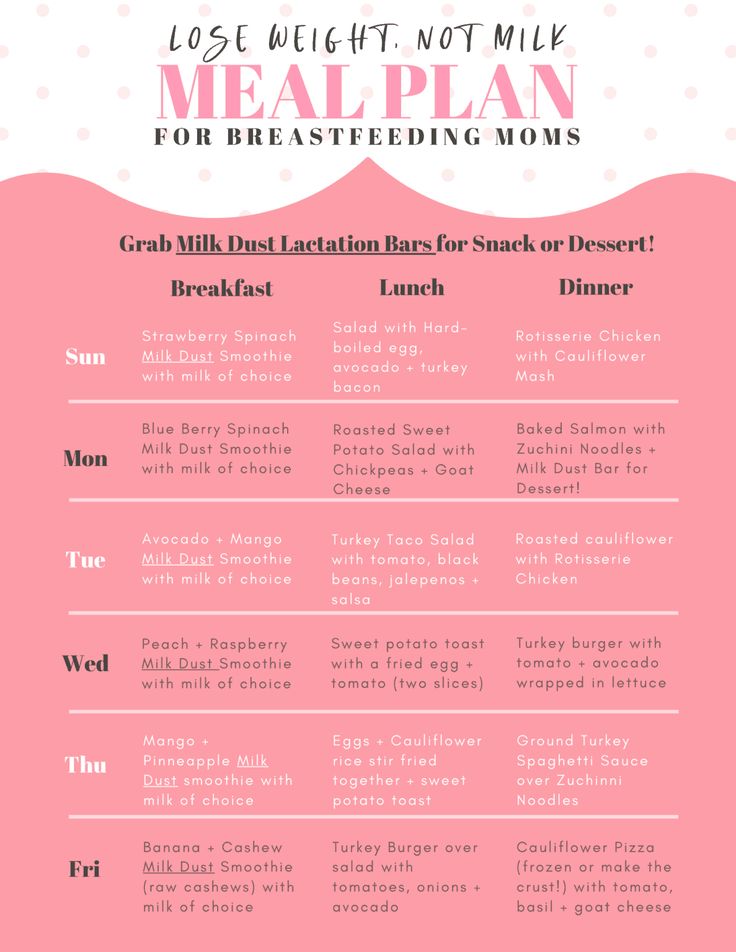 Here are tips on how to lose weight while breastfeeding without impacting your milk supply.
Here are tips on how to lose weight while breastfeeding without impacting your milk supply.
One thing to keep in mind as you read: Your body just did something amazing! Growing baby took time, allow yourself that same time to heal, recover and get back to your pre-pregnancy body (if that is your goal).
In this article:
Dieting while breastfeeding
Foods to eat while breastfeeding
Easing into postpartum exercise
Dieting While Breastfeeding
Most experts don’t advocate dieting while breastfeeding. That’s because your body needs extra fuel to make breast milk—about 500 or so additional calories a day, says Mary Jane Detroyer, MS, RD, CDN, a New York City-based nutritionist, registered dietitian and personal trainer.
“We definitely recommend that mothers not go on a particularly restrictive diet—nothing that’s lower than 1,500 calories a day, which wouldn’t permit a robust milk supply,” adds Shannon Davids, MD, an OB-GYN at Thomas Jefferson University Hospital in Philadelphia. In general, she says, an 1,800- to 2,200-calorie diet a day is optimal for overall nutrition, recovery and breastfeeding.
In general, she says, an 1,800- to 2,200-calorie diet a day is optimal for overall nutrition, recovery and breastfeeding.
While some nursing women shed pounds quickly, since the act of making milk burns off a lot of calories, others have to be more mindful in balancing how much they eat versus what they eat to reach a more homeostatic weight, says Detroyer. Read on to learn which foods are best—and best avoided—to support your goals of losing weight while breastfeeding.
Foods to Eat While Breastfeeding
For the fastest way to lose weight while breastfeeding, don’t count calories, says Detroyer—rather, be mindful of the quality of foods you’re eating. Instead of eating less, which would likely impact your milk supply, make your meals healthy and nutritious and just a bit bigger than normal. “Add an extra ounce or two of protein at a meal, a cup of starch and a quarter cup of veggies—that’s all you need,” she says. “Problems arise when you substitute nutrient-dense food for others because they’re quick and easy. ”
”
Grabbing the nearest bag of chips or cookies when you’re exhausted and between feedings might be convenient, but cheese or a handful of almonds or crackers spread with peanut butter are better options. Try to stock up on these food groups to get your body back on track and keep your breast milk as nutritious as possible:
-
Fruits, vegetables and grains for minerals and vitamins. Detroyer suggests whole wheat, rye, quinoa, millet and farro.
-
Starches that provide energy to help your body produce milk. Good options include winter squash, beans, potatoes, pasta and rice.
-
Lean protein from meat, fish and nuts to help build and repair body tissue.
-
Fat. Your diet doesn’t influence how much fat ends up in your milk, but it does impact the type. Olive oil, cheese, eggs, avocados, nuts and seeds help provide a good balance of monounsaturated and omega-3 fatty acids, which are vital for baby’s brain development.

-
Water. Breast milk is about 90 percent water, but you don’t have to chug water constantly to stay hydrated (and drinking more won’t produce excess milk). Drink when you’re thirsty and keep an eye on the color of your urine. If it’s dark, you need to take in more fluids.
These are some foods that experts advise limiting to support losing weight while breastfeeding:
-
Snack foods with empty calories, like chips, candy and soda.
-
Sugary foods, which have been shown to contribute to inflammation.
-
Alcohol, which in large amounts via breast milk could impair baby’s development.
Easing into Postpartum Exercise
Being mindful of what you eat is the best way to jumpstart your metabolism and lose weight while breastfeeding without sacrificing the quality or quantity of your breast milk, but postpartum exercise should be part of your regime too. Not only will it boost your energy, but engaging in light movement as soon as you feel up to it will help get your stretched-out abdominal muscles back into shape.
Not only will it boost your energy, but engaging in light movement as soon as you feel up to it will help get your stretched-out abdominal muscles back into shape.
“It’s not just about the extra pounds; your body tissue changes too,” says Susan Clinton, PT, a physical therapist and co-founder of Embody Physiotherapy and Wellness in Sewickley, Pennsylvania. “A lot of people look at a drooping belly as fat to lose, but it’s more that the muscles need to learn to come back into a shortened position to be part of the abdominal wall again.”
The natural weight-lifting program of early motherhood—lifting your newborn, walking up and down stairs, pushing the stroller—are enough to get started in the first two or three weeks after giving birth, says Clinton, noting that even women who didn’t experience tearing or an episiotomy need time for their pelvic muscles to heal. “As long as you’re staying active, your body will start to change,” she says.
Other ways to help tone your muscles after giving birth and lose weight while breastfeeding:
-
Do Kegel exercises to help strengthen your pelvic muscles more quickly.

-
Pull in your stomach, which can also help toughen up muscles.
-
Gentle (not deep!) stretching with a resistance band to work the parts of your body strained by breastfeeding: your shoulders, back and chest.
-
Go for a walk, even a short one, each day.
-
Hold baby close to your body to protect your abdominal wall.
Building Yourself Back Up
Even once your healthcare provider gives you the green light to start exercising more regularly, you should still go easy. “If you’re super-fatigued, the worst thing you can do is get all crazy with high-intensity exercise,” says Clinton. “It could actually make you gain weight instead of burning excess calories.” Usually doctors will recommend moms to start regular exercise 6 weeks after a vaginal delivery, unless they’ve had a severe vaginal tear. For women who’ve had a severe vaginal tear, or who’ve had a c-section, doctors will generally recommend waiting until 8 weeks.
To help you in losing weight while breastfeeding, try to work yourself up to 150 minutes of moderate aerobic activity per week, which is about 20 to 30 minutes a day of walking. You can also resume things like yoga or tai chi, especially if you were practicing before baby. While exercising doesn’t impact the composition of your breast milk, you should replace any fluid you lose through sweating to keep your milk supply up, says Davids. You also might want to pump or nurse before working out so you’re not uncomfortably engorged.
Signs you may be working your body too hard too soon: You regularly leak urine while running, leaping or sneezing during workouts or you experience recurring joint pain. “Don’t brush any of this off to ‘Oh, I just had a baby,’” says Clinton. “These are signs your system isn’t optimal and you need to go back to your medical team.”
The true secret to losing weight while breastfeeding? Stay away from social media feeds, magazine articles and TV shows that showcase how quickly others lost their baby weight, and focus on your own journey.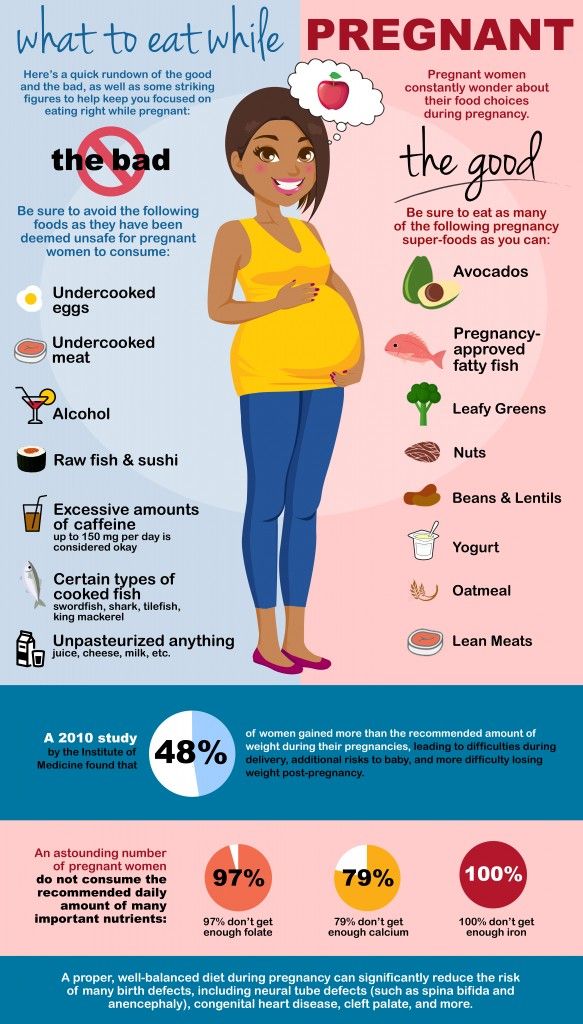 “Don’t compare yourself to anyone else,” says Detroyer. “You’ll just drive yourself crazy.” Everyone loses weight at a different rate. Instead of obsessing over numbers on the scale, strive toward getting to a point where you feel healthy, happy and strong. Postpartum bodies all look different, but every mama is a warrior!"
“Don’t compare yourself to anyone else,” says Detroyer. “You’ll just drive yourself crazy.” Everyone loses weight at a different rate. Instead of obsessing over numbers on the scale, strive toward getting to a point where you feel healthy, happy and strong. Postpartum bodies all look different, but every mama is a warrior!"
Remember that growing and giving birth to baby is no small feat. Your postpartum body is a reminder you just did something amazing. If you are keen to get back to your pre-pregnancy body, remember to do it in a way that best serves you and baby.
About the experts:
Jennifer Ritchie, IBCLC, is a lactation consultant in Newport Beach, California. She’s the founder and owner of Milkalicious and author of I Make Milk, What’s Your Superpower?.
Mary Jane Detroyer, MS, RD, CDN, is a registered dietitian, exercise physiologist and certified personal trainer with more than 20 years of experience working in health and fitness. She operates a private practice in New York City, Mary Jane Detroyer & Associates.
She operates a private practice in New York City, Mary Jane Detroyer & Associates.
Shannon Davids, MD, is an OB-GYN at Thomas Jefferson University Hospital in Philadelphia. She completed her medical degree at SUNY Upstate Medical Center, Medical School.
Please note: The Bump and the materials and information it contains are not intended to, and do not constitute, medical or other health advice or diagnosis and should not be used as such. You should always consult with a qualified physician or health professional about your specific circumstances.
Plus, more from The Bump:
How to Love Your Postpartum Body
How to Eat a Healthy Breastfeeding Diet
10-Minute Workout Routines You Can Do While Baby Naps
How to lose weight while breastfeeding
How to lose weight while breastfeeding 8 812 380 02 38St. Petersburg
Make an appointment
Feeding a nursing mother is a very important issue. The health of the child, as well as the health and appearance of the mother, depend on a correct and balanced diet. In magazines and the Internet you can find a huge number of recommendations, but, unfortunately, many of them are far from the truth. For example, it is recommended to increase the daily caloric intake of a nursing woman to 3000 - 3500 kcal. For comparison: the daily calorie content of the diet of people engaged in heavy, manual, non-mechanized labor (manually drag bricks to the tenth floor all day) is 4000 kcal. Knowledge workers (an engineer who travels to and from work by public transport and walks at lunchtime), i.e. people with minimal physical activity should receive about 2000 kcal per day. No matter how much they write about how hard it is to be a mother, how much you need to do (wash, wash, iron), modern life is greatly facilitated by household appliances. If not every apartment still has a dishwasher, then everyone has a washing machine, and no one uses heavy cast-iron irons either.
The health of the child, as well as the health and appearance of the mother, depend on a correct and balanced diet. In magazines and the Internet you can find a huge number of recommendations, but, unfortunately, many of them are far from the truth. For example, it is recommended to increase the daily caloric intake of a nursing woman to 3000 - 3500 kcal. For comparison: the daily calorie content of the diet of people engaged in heavy, manual, non-mechanized labor (manually drag bricks to the tenth floor all day) is 4000 kcal. Knowledge workers (an engineer who travels to and from work by public transport and walks at lunchtime), i.e. people with minimal physical activity should receive about 2000 kcal per day. No matter how much they write about how hard it is to be a mother, how much you need to do (wash, wash, iron), modern life is greatly facilitated by household appliances. If not every apartment still has a dishwasher, then everyone has a washing machine, and no one uses heavy cast-iron irons either.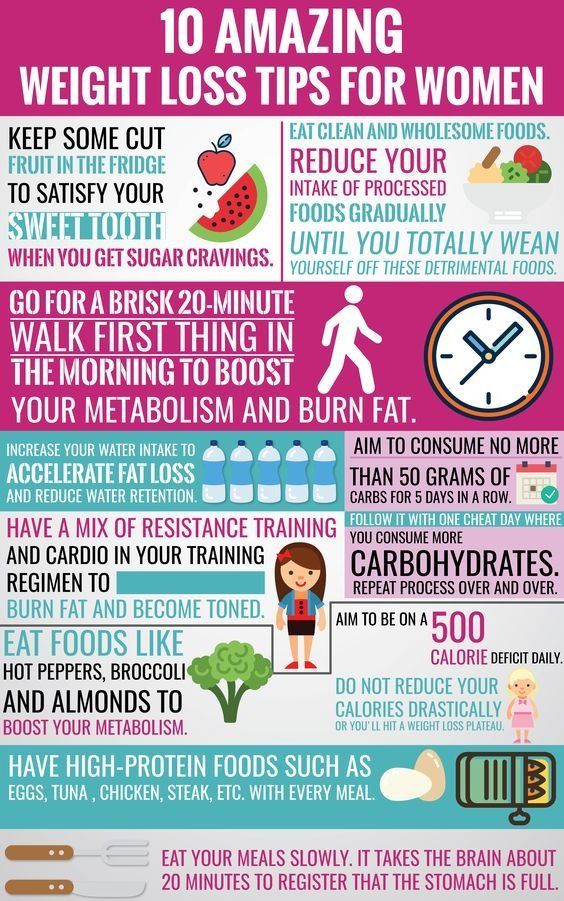 So whatever one may say, a nursing mother is a woman with minimal physical activity. And an extra thousand calories will go not to increase the calorie content, fat content and nutritional value of milk, but to the mother’s hips and stomach.
So whatever one may say, a nursing mother is a woman with minimal physical activity. And an extra thousand calories will go not to increase the calorie content, fat content and nutritional value of milk, but to the mother’s hips and stomach.
A large number of studies have been carried out, according to which it has been established that women living in a wide variety of conditions (favorable and not very favorable) can fully lactate. Women in primitive cultures, on a very modest diet, produce milk in sufficient quantity and proper quality to feed their child. Lack of nutrition does not affect the quality of milk. An increase in the calorie content of the daily diet also does not lead to changes in the composition of breast milk.
Most women are concerned about maintaining their figure after having a baby.
During pregnancy, a woman's body stores fat. Therefore, the weight after the birth of a child is somewhat greater than before. These fat reserves are necessary for the body to maintain strength in case of real hunger. After all, nature must make sure that all the cubs survive. And it is during the period of breastfeeding that these fat reserves begin to be consumed. Therefore, if a woman after the birth of a child eats properly and in a balanced way, then by the end of the breastfeeding period (in 1.5 - 2 years), her weight will return to its previous indicators.
After all, nature must make sure that all the cubs survive. And it is during the period of breastfeeding that these fat reserves begin to be consumed. Therefore, if a woman after the birth of a child eats properly and in a balanced way, then by the end of the breastfeeding period (in 1.5 - 2 years), her weight will return to its previous indicators.
Once again, there is no need to follow any special diets either to lose weight or to increase the fat content of breast milk (yogurt 9% fat and 35% sour cream will not affect the fat content of milk, but will affect your thighs).
The main task of a mother in the struggle for the harmony of her figure is to try not to increase her weight after the birth of a child. And in this she will be helped by the well-known principles of a healthy and rational diet.
The daily caloric intake should correspond to the woman's physical activity. If she works in the field for agricultural work - the calorie content is higher, if she sits at home and walks at a slow pace with a stroller in the park - the calorie content is much lower.
- So, what are the basic principles of a healthy diet? Daily calorie content is about 2000 kcal, depending on physical activity. No more needed, tk. excess calories will be stored as excess weight. Less is also not necessary, tk. this will lead to a slowdown in metabolism and poor health for both mother and child.
- Eat often, about 5-6 times a day, avoiding the appearance of a strong feeling of hunger. It has been proven that a strong feeling of hunger leads to overeating, and therefore to the appearance of excess weight.
- Food should be satisfying. For example, meat with vegetables. Vegetables are a source of carbohydrates, which contribute to a quick feeling of satiety, because. fill the stomach. Meat is protein. It is absorbed longer than carbohydrates, which contributes to the long-term preservation of the feeling of satiety.
- Do not be distracted by anything while eating: do not watch TV, do not read a magazine, even if the baby is crying, try not to be distracted.
 For 30 minutes that you eat nothing will happen, savor every bite. The process of eating should be treated very carefully. Eating on the run does not contribute to proper digestion or weight management.
For 30 minutes that you eat nothing will happen, savor every bite. The process of eating should be treated very carefully. Eating on the run does not contribute to proper digestion or weight management.
When choosing food for yourself, it is important to remember that the main task of food is to maintain energy and saturate the body with all the necessary nutrients: vitamins, minerals, microelements.
The basis of the diet, oddly enough, is carbohydrates. You get them from grain products and vegetables. They are the best sources of fiber, B vitamins, trace elements. The most useful grain products are wild and brown rice, pearl barley, oatmeal, buckwheat and millet, wholemeal pasta, cereal bread. It is advisable to eat 10 servings of grain products per day. One serving is ½ cup of porridge or pasta or 1 slice of whole grain bread.
Vegetables and fruits - any. 10-13 servings per day. One serving: 1 cup fresh herbs, ½ cup vegetables, 1 banana or apple or orange, ½ cup canned fruit.
Proteins are fish, meat, poultry, eggs, dairy products (kefir, cottage cheese). Fish is a source of heart-healthy fatty acids, as well as calcium and phosphorus, necessary for strong bones. The need for fish is 2-3 servings per week. One serving is a piece the size of a palm without fingers. Meat is a source of trace elements. These are low-fat varieties of beef, pork, rabbit. The need is 4-5 servings per week. The portion size is the same. Dairy products are a source of calcium, the norm is 2 servings per day. One serving is one glass. (And another essential serving of calcium per day is 1 cup of spinach or broccoli.)
Fats are found in butter (animal fat) and vegetable (vegetable fat) oils. And the share of animal fats should account for only 10%. This means that food should be cooked mainly using vegetable oil.
In addition to the composition of the products, great importance is attached to the method of cooking.
For example, raw vegetables and fruits retain more vitamins and minerals.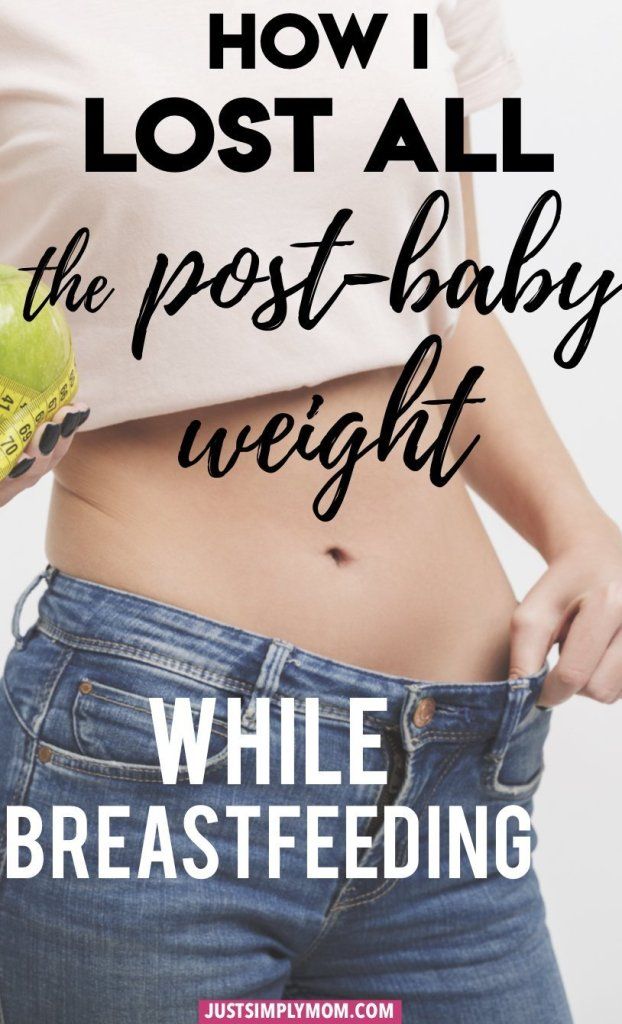
Meat, fish, poultry, it is better to boil or bake in the oven, which allows you to reduce the calorie content of the finished dish, because. no oil is added.
Keep in mind that beverages such as juices contain a lot of extra calories and very little fiber and vitamins. Therefore, to compensate for the deficiency of vitamins and fiber, it is better to eat an apple. And to quench your thirst, use drinking water. The amount of liquid in the diet of a nursing mother is about 2 - 2.5 liters per day. It is considered that soups and fruits are 100% liquid.
As for “empty” products that contain neither fiber, nor vitamins, nor microelements, but only extra calories, these are a wide variety of rich products: cookies, crackers, dryers, cakes, cakes, ice cream. Since, after the birth of a child, a mother constantly wants to eat, and there is not enough time to prepare a full meal, she begins to absorb cookies in unlimited quantities. And the weight, of course, increases. I'm not talking about the fact that the cause of colic and flatulence in a small child is very often the excessive consumption of "empty" carbohydrates by the mother.
I'm not talking about the fact that the cause of colic and flatulence in a small child is very often the excessive consumption of "empty" carbohydrates by the mother.
And a little more about calories. Everyone talks about them, but no one knows what they look like. So, 100 kcal are contained in 1 banana, or 8 tablespoons of cooked beans, or 1.3 cookies, or 2 medium apples, or 340 ml of light beer, or 1/5 of a big mac, or 1/12 of a medium pizza with meat, or 4 slices of french fries, or 1/5 pita bread, or 2 gin tonics, or 17 peanuts, or 300 ml of milk, or 9 chips. Calculate what you have and how much.
This article is about a healthy mother and a healthy baby. Naturally, if the baby has some kind of disease, for example, allergic dermatitis, then the mother's nutrition will be adjusted. But this correction will affect mainly the diversity of products within the same group. For example, if a child is allergic to fish, then there is no need to exclude beef. If there is a reaction to millet, then barley can be eaten. Your pediatrician will help you with this.
Your pediatrician will help you with this.
Do not forget that in the fight against excess weight, not only nutrition is important, but also physical activity. Hiking, swimming in the pool, exercise, massage increase self-esteem, improve mood and figure. All kinds of prohibitions on moderate physical activity are nothing more than prejudice. Get fit, stay fit and happy.
Request a call to the call center
Thank you, your application has been accepted and is being processed
Thank you for contacting us!
Our specialist will contact you during the day to clarify the details and make an appointment. Please keep in touch. If you feel uncomfortable waiting or need an urgent appointment, please call 8 812 380 02 38.
Error message
Thank you for helping to make our site better!
We use cookies
When you visit the site, you agree that we process your personal data.
Read more
How to lose weight after childbirth while breastfeeding
Tuesday, 18 September 2018
The article is devoted to the main issues of life and health of a modern woman.
How to build after childbirth while breastfeeding? After childbirth, the main goal of a woman is the full development of the baby, the basis of which is breastfeeding. While enjoying breastfeeding, many young mothers notice that the former prenatal harmony does not want to return. Sometimes, despite all efforts, the weight continues to increase.
How to lose weight after childbirth while breastfeeding - principles of a healthy diet
Usually the problem of unwanted kilograms is solved with the help of a special diet. But is there an expert-approved balanced diet for young mothers who are breastfeeding their babies? After all, their diet should be complete, containing the full range of nutrients needed by the baby. It is important to understand that, contrary to popular belief, eating for two is not worth it during pregnancy. The amount of food eaten is unlikely to increase the amount of breast milk, but the lifeline at the waist will definitely grow.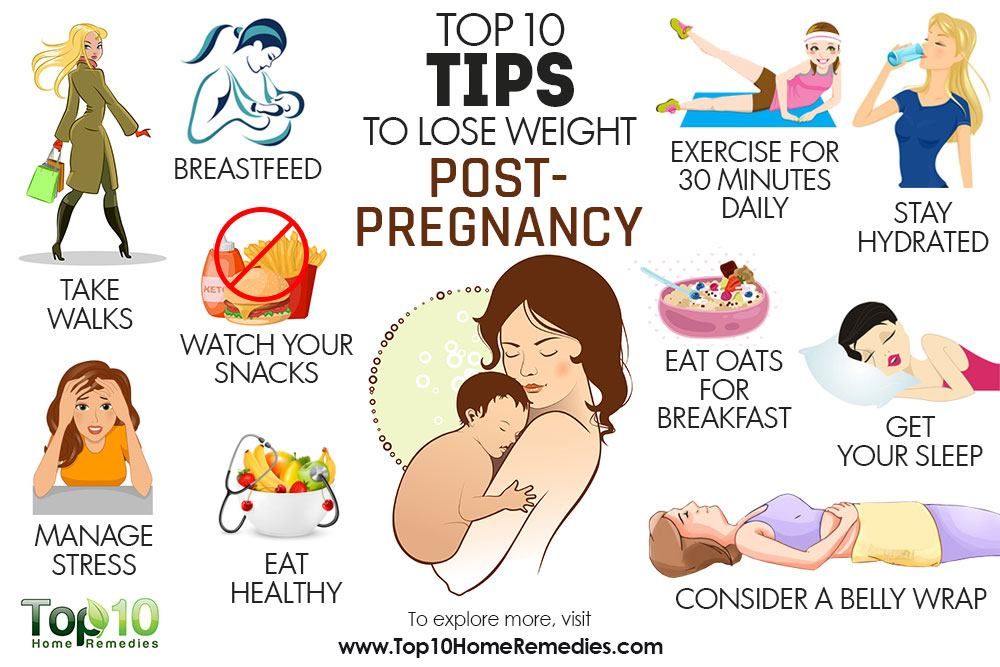
How to choose a diet for weight loss after childbirth
Of course, the health of the baby is above all. It requires such a selection of products that would contain all the essential amino acids necessary for the growth of the newborn. How to lose weight after childbirth while breastfeeding in this situation? Therefore, strict diets for a young mother during breastfeeding are strictly contraindicated. But a rational balanced diet, for young mothers, will contribute to safe weight loss, the return of a slim figure. The diet will ensure the presence in the milk of proteins, fats and carbohydrates that are healthy for the baby.
When can I start to lose weight after childbirth
However, even on this safe diet, it is better not to sit down immediately after childbirth, but to allow yourself to recover. Then, after 5-6 months, eliminate light carbohydrates and trans fats from the diet. What should be the diet for nursing mothers who want to lose weight after childbirth while breastfeeding? How to get back in shape?
5 diet tips for weight loss while breastfeeding
- The very first rule of the diet for weight loss after childbirth during breastfeeding can be formulated as follows: we eat only what the body really needs.
 Try not to get carried away with fried, floury and sweet, giving preference to cereals and vegetables.
Try not to get carried away with fried, floury and sweet, giving preference to cereals and vegetables. - Fat in the daily diet of a young mother who wants to return the figure to prenatal forms should be no more than 40%. Therefore, buy dairy products with the lowest possible fat content, and give up seeds and nuts for a while. Meat, especially beef, is essential during lactation, but they should not be eaten more than once a day.
- The diet of a nursing mother requires mandatory control over the amount of food eaten. The daily calorie intake of medium-sized and short women should be reduced to 1500, and those who are tall and large by nature should be reduced to 2000.
- An important guarantee of weight loss after childbirth is the right diet. If you intend to lose weight, you should eat small portions (no more than 250 g), but often: 5-7 times a day.
- Hypoallergenic diet for weight loss after childbirth during breastfeeding means avoiding foods that contain allergens - substances that can cause an allergic reaction in an infant.
 These products include: citrus fruits, strawberries, chocolate, eggs, various canned food. In no case should you take dietary supplements for weight loss! Thirst should be quenched with the most ordinary clean water and fresh fruits, but not with sweet water. Exclude soda, sweet tea, factory kvass.
These products include: citrus fruits, strawberries, chocolate, eggs, various canned food. In no case should you take dietary supplements for weight loss! Thirst should be quenched with the most ordinary clean water and fresh fruits, but not with sweet water. Exclude soda, sweet tea, factory kvass.
According to these principles, a diet for nursing mothers for weight loss may well be compiled independently. To simplify the task, we offer an approximate menu.
Breakfast options:
25 g cereal (unsweetened) with milk, banana.
25 g cheese with bran bread toast, apple.
Lunch options:
100 g not very fatty cod steak, garnished with mashed potatoes with herbs and green peas; low-calorie yogurt; green salad.
Spaghetti with tomato sauce, low-fat minced meat, garlic, herbs and cheese; mixed salad; small apple.
Dinner options:
125 g boiled beans; 2 toasts; banana.











